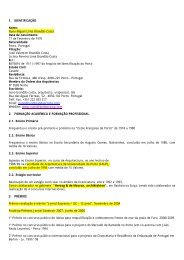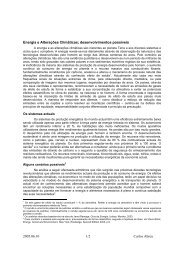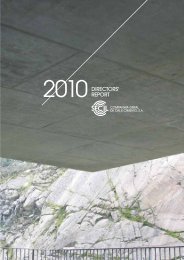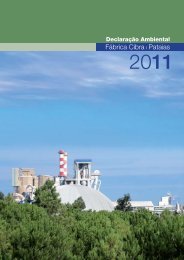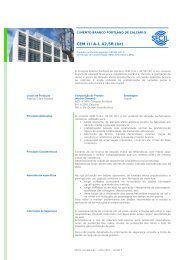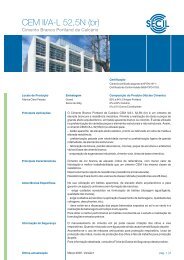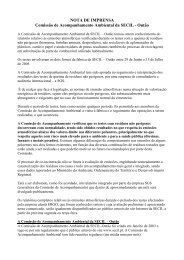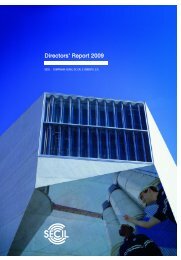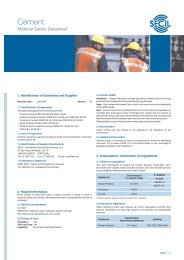5. - Secil
5. - Secil
5. - Secil
You also want an ePaper? Increase the reach of your titles
YUMPU automatically turns print PDFs into web optimized ePapers that Google loves.
3. PORTUGAL<br />
3.1. MACROECONOMIC<br />
BACKGROUND<br />
Business in Portugal was significantly<br />
constrained in 2008 by international<br />
economic developments.<br />
Interest rates and oil and commodity<br />
prices soared in the first half of<br />
the year and the financial crisis<br />
spread from June onwards. By the<br />
fourth quarter, developed economies<br />
tipped into recession, accompanied<br />
by a sharp drop in<br />
interest rates and the oil price.<br />
In this context, gross domestic<br />
product is expected to have increased<br />
by only 0.3% in 2008 (Bank<br />
of Portugal – Economic Bulletin –<br />
January 2009), with negative growth<br />
forecasted for 2009.<br />
According to the same source,<br />
investment, measured by gross<br />
fixed capital formation, is expected to have<br />
declined by around 0.8%, resuming the<br />
downwards trend recorded up to 2006 and<br />
interrupted in 2007.<br />
The construction sector continued to<br />
decline, albeit more slowly than might have<br />
been expected in view of the current crisis.<br />
According to INE data, construction and<br />
public work activity is thought to have declined<br />
by around 1% in 2008 (construction<br />
and public works production index – INE –<br />
January 2009). According to data published<br />
by FEPICOP (Portuguese Construction<br />
and Public Works Federation), the decline<br />
stood at approximately 1.1% (Sector<br />
Analysis – January 2009).<br />
Inflation, measured by the harmonized<br />
retail price index, stood at 2.7%, slightly<br />
down from 2007 (2.4%).<br />
Interest rates rose gradually<br />
through to September, and then<br />
fell sharply: as an example<br />
the Euribor (3 month)<br />
rate fell from 4.67%<br />
in December 2007<br />
to 2.89% in December<br />
2008.<br />
3. Portugal<br />
3.2. CEMENT<br />
3.2.1. MARKET AND SALES<br />
Cement consumption in the European<br />
Union is expected to have declined by<br />
approximately 6% in 2008, clearly inverting<br />
the trend of growth recorded over<br />
recent years.<br />
In Portugal, cement consumption<br />
is thought to<br />
have stood at 7.3<br />
million tons, represent<br />
i n g<br />
a significantde-<br />
Pataias Swimming Pools<br />
crease in relation to 2007<br />
(- 7.5%) and a return to<br />
marked decline which<br />
started in 2002 and only<br />
briefly interrupted in<br />
2007.<br />
The decline in cement<br />
demand in recent years<br />
reflects the recession in<br />
the construction sector<br />
which has been most<br />
hard felt in the residential<br />
segment and to a lesser<br />
extent in the non-<br />
-residential and public<br />
works sectors.<br />
It is estimated that<br />
the volume of cement<br />
sold in the<br />
country resulting<br />
from<br />
cement<br />
and<br />
clinker imports was<br />
approximately<br />
400 000<br />
tons in<br />
2008.



